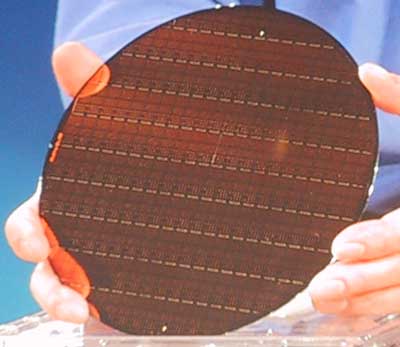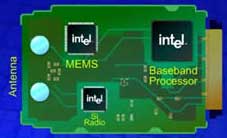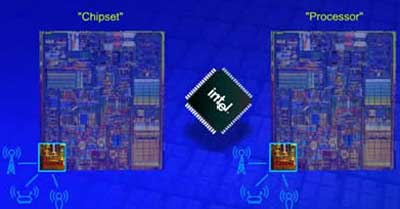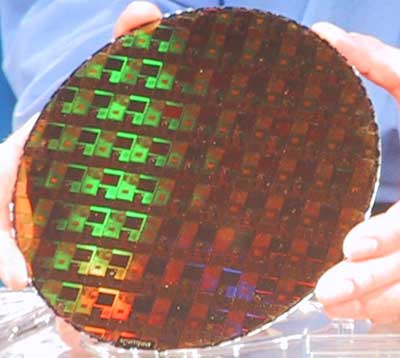Intel Developer Forum Spring 2002 - Wrap Up
by Anand Lal Shimpi on March 5, 2002 12:00 PM EST- Posted in
- Trade Shows
Wireless Everything
A proposal that Gelsinger made at IDF was to eventually introduce what he called a "Radio Free Intel." The term is a bit of a misnomer as Intel is planning on providing Radio Frequency (RF) technology free on future silicon devices.

A MEMS wafer
Intel has been experimenting quite a bit with what are known as Micro-electro Mechanical System (MEMS) devices which are essentially devices that rely on the physical properties of the silicon they're built on to mimic mechanical devices that exist today. Examples would be levers, capacitors, inductors, etc... all implemented in silicon through the use of these MEMS devices.

The benefit Gelsinger was quick to point out was the size reduction of RF transmitters and receivers. Currently if you look at any RF device you'll note that the vast majority of the device consists of analog components capacitors, inductors, etc... and only a few pieces of silicon are rarely ever found on board.

Intel's goal, moving forward, is to integrate as many of these components as possible into silicon through the use of MEMS devices. Thus producing a much smaller form factor board, and eventually reducing the size of the device into a small piece of silicon that can be integrated into chipsets and CPUs.


Most of the components required for RF circuitry have already been implemented in Silicon as Intel attempted to demonstrate with this Si-Radio wafer.
The possibilities for this will be endless. It'll still be a few years before we start seeing Intel CPUs and chipsets ship with integrated Silicon Radio technology but when they do it will mean that wireless connectivity is no longer something you'll have to think about, it will just be there. Rumor has it that Banias will begin to implement some of these technologies but it's unclear at what level or what we should expect. One thing is for sure, wireless network access will be a major part of Banias and future Intel CPUs going forward.
Other capabilities such as the ability to seamlessly transition from one network to another and even across different types (LAN to wireless LAN to wireless WAN, etc...) must be enabled as well which will also the delay the introduction of this technology. Then there are security issues and IP addressing issues that must be worked out, having an RF transmitter in your CPU wouldn't be too useful if you couldn't roam beyond an access point giving you an IP address. The ability to join networks anywhere and always remaining connected to the Internet is a major focus of this technology.










0 Comments
View All Comments